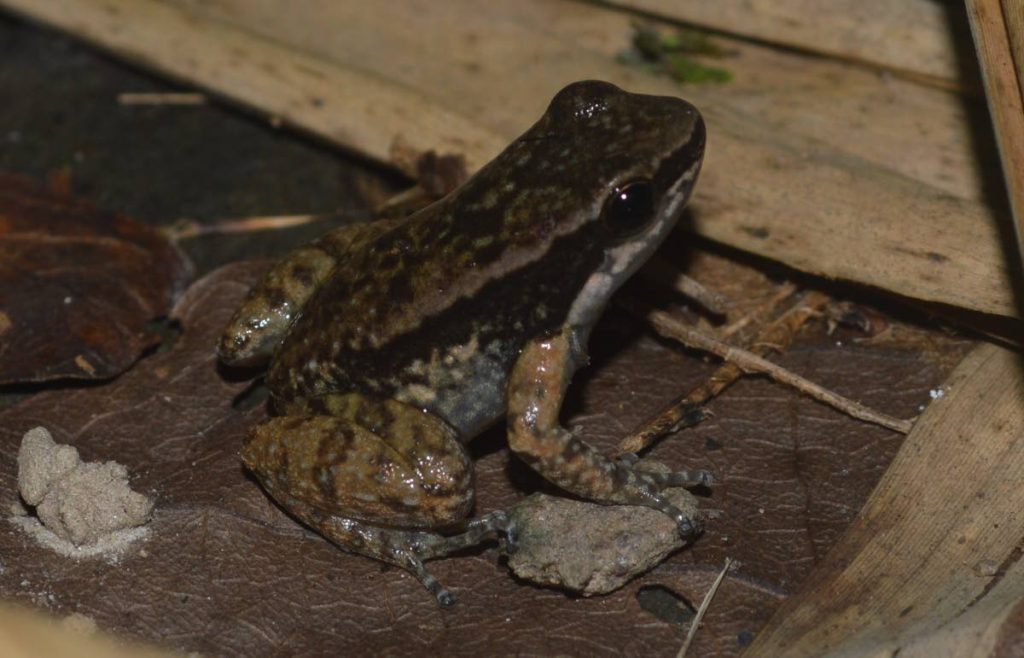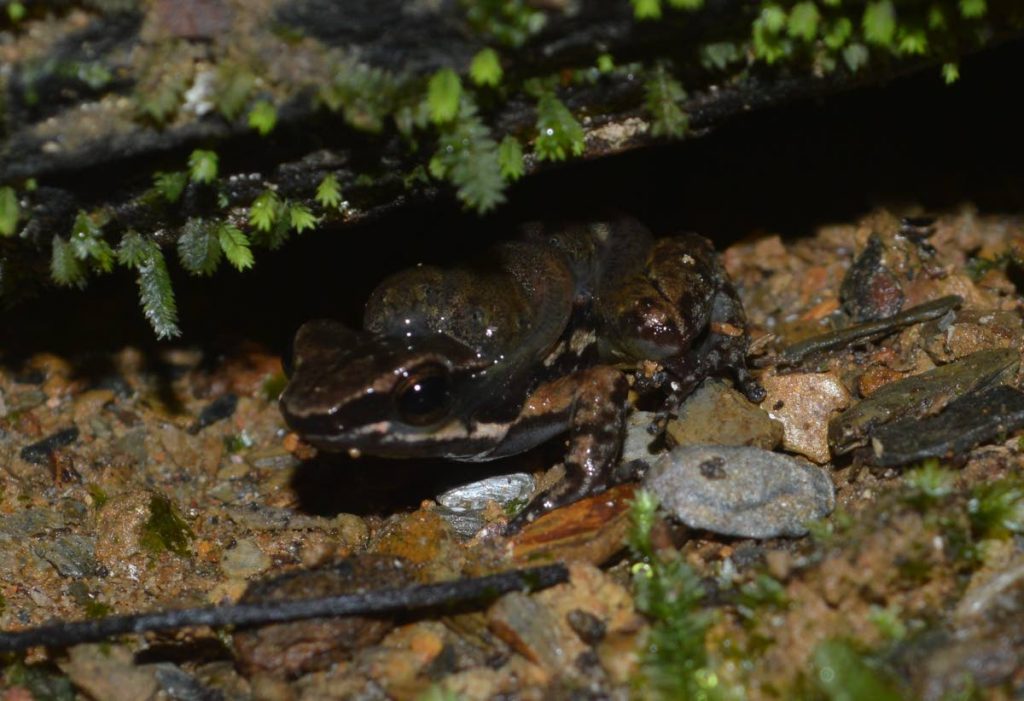Trinidad stream frog, the species that's found nowhere else in the world

Did you know that there’s a frog that’s found only in Trinidad and nowhere else in the world?
Herpetologist Renoir Auguste wants you to learn more about the Trinidad stream frog (Mannophryne trinitatis).
Scientists once believed these frogs were also found in Venezuela. But genetic work done over 20 years ago proved they were not, which made them Trinidad’s only endemic frog species.
Auguste told Newsday Kids, “The Trinidad stream frog actually lives near streams which is how it would have gotten its common name. But it’s only found in the streams in the northern and central ranges of Trinidad.”
If you’re wondering why these frogs are only found there, Auguste explained that they prefer cool temperatures and high elevations. So that’s why you tend to find them in the cool, hilly ranges.
While it’s estimated that there are hundreds of thousands of these frogs in the wild you may not see one that easily because of their size. On average they grow no larger than three centimetres.
However, while it may not be that easy to see one there’s a good chance you will hear a male making his mating call.
Auguste explained, “If you are one of those people who are hiking in the Northern Range chances are you may hear their 'peep' call while crossing a stream, because they call during the day.
“Most frogs in Trinidad call at night but this particular frog calls during the day which may just be another case of evolution. Because they live in a cooler climate at a higher elevation it means they can actually be out during the day, whereas in a low-lying area it’ll be hotter during the day which they won’t be able to tolerate.”

While both male and female frogs are various hues of brown, females are distinguished by their yellow throats.
When it comes to parenting, there’s a way these frogs distinguish themselves too.
“One of the interesting things about this frog is that the male actually takes care of the young.
“So when the male and the female mate, the female lays the eggs in a little clutch under leaves and the male guards them.
“When the eggs hatch as tadpoles they actually hitch a ride on the father’s back and he will then take those tadpoles to a stream where they can develop and grow.”
While the males care for the young the females go about finding another mate.
Given they are only found in Trinidad, it’s important that these frogs are protected as much as possible.
When the International Union for Conservation of Nature (IUCN) first assessed the status of these frogs in 2004, they were classified as vulnerable.
However, research done by Auguste and his colleagues found they had a healthy population, which led to their reclassification in 2020.
“Based on the calculated estimations there are probably millions of these frogs here in Trinidad.

“So because of that, their IUCN was downgraded from 'vulnerable' to 'least concern'…so right now they are not endangered in Trinidad.”
Like most frogs, these frogs feed on small insects like mosquitoes and flies which helps to keep the population of these insects in check. Hence they play an important role in ecosystems.


Comments
"Trinidad stream frog, the species that’s found nowhere else in the world"